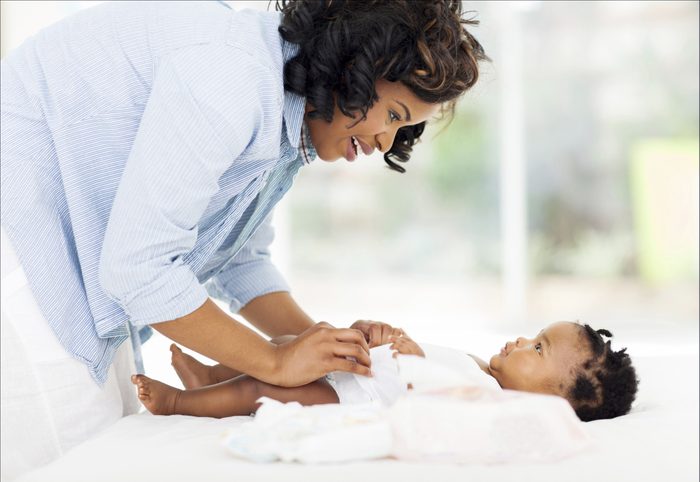
When you remove stool from a baby’s bottom, do it as gently as possible. Fill a spray bottle with warm water and a few drops of baby oil, spritz on the mixture, and then gently wipe the area with a clean cloth.
If you use baby wipes, look for a brand that does not contain alcohol or fragrances.
If wiping seems too painful, rinse the baby’s bottom with water, then pat dry. Do not use soap, which is irritating.
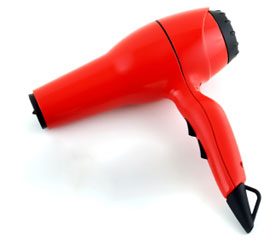
Bring Out the Blow-Dryer
If your baby’s bottom is too sore to towel-dry after a bath or a change, use your blow-dryer. Set the dryer on the coolest setting. (Keep checking the air to make sure it’s not too hot.) Hold the dryer at least 10 inches from your baby’s skin, and keep it moving back and forth.

Give Him Some Air
When the diaper is off and your baby is all cleaned up, give him an air bath for 10 to 15 minutes, letting the diapered area stay exposed to air. As long as he’s happy, he can remain chest down, on a towel placed on top of a waterproof sheet. The longer he remains diaper-free, the better.
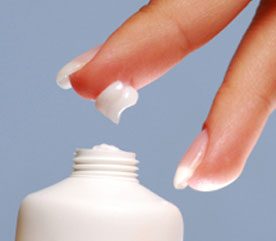
Opt for the Right Ointment
Use an ointment made with zinc oxide, which has weak antiseptic properties and provides a barrier between your baby’s skin and the moisture that irritates it. Desitin or A8D Diaper Rash Ointment are two brands that contain this ingredient.
For a rash that is deep red, has an irregular border and tiny dots around the edges, use a combination of the antifungal cream Canestan and hydrocortisone creams. Mix together equal parts of Canestan and 0.05% hydrocortisone and apply the mixture to the genital area, the buttocks, groin, and creases that look inflamed. Then, on top of that, apply a barrier cream, such as Penaten, that protects the baby’s skin from irritating substances. (Don’t use petroleum jelly as a barrier cream. It prevents the diaper from absorbing urine.) You can use these creams three to four times a day.
For an all-purpose cream that clears up diaper rash caused by yeast and ammonia, mix together equal parts of Nivea cream, Canestan cream, cornstarch, and Penaten. Apply this mixture with each diaper change.
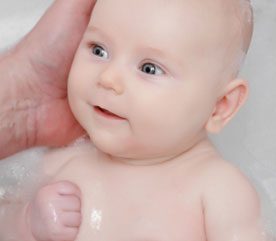
Puttin’ On the Sitz
A sitz bath may also ease your baby’s discomfort. Several times a day, fill the tub with a few inches of warm water and let your child sit and play with his toys for five or ten minutes. Stay right there with him, of course.
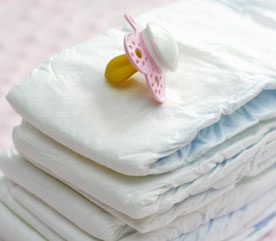
The Power of Prevention
If you use disposable diapers, get the super-absorbent type. They draw more urine toward the centre of the diaper and therefore away from the skin. You should still change the diaper just as often.
If you use cloth diapers and wash them yourself, add one-quarter cup of white vinegar to the final rinse. The acid in the vinegar will discourage the growth of bacteria and bring the pH of the diaper closer to the neutral pH of your baby’s skin.
Unless you absolutely have to, don’t cover cloth diapers with plastic pants. The plastic holds in moisture, which encourages the onset of diaper rash.
Whether you use disposable or cloth diapers, fit them more loosely than you see on the TV ads. Super tight diapers prevent the circulation of air and contribute to skin irritation.
Moms and grandparents alike love the fresh, clean “baby’s smell of baby powder. But some baby powders contain additives that can actually cause a rash, rather than prevent it. And the powder contains fine granules that babies should not inhale. If you want to use a powder, use cornstarch (which has no irritating additives). Mix it with a gentle cream like Nivea and apply it to the baby’s bottom.